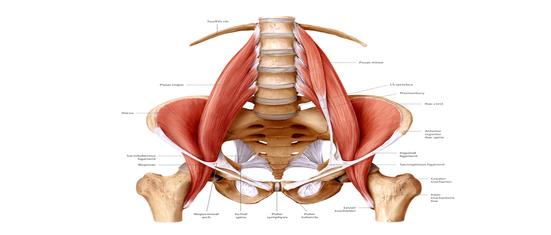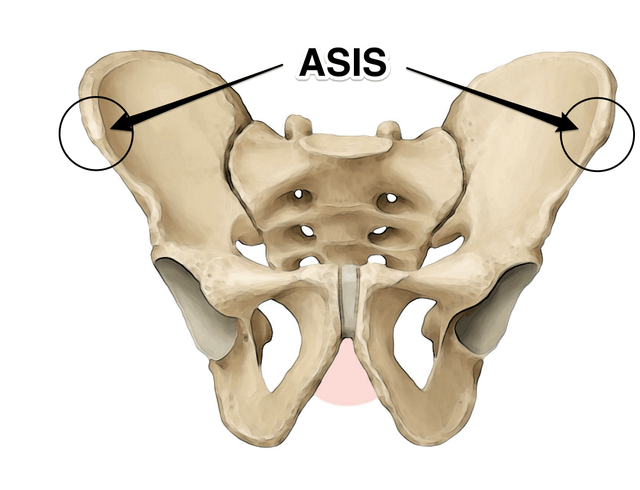It's all connected - the psoas muscles
There are two muscles that connect from your lower thoracic vertebrae right down to the top of your femur. They attach to each vertebrae and rib as they go If they are over tight they have the potential to cause:

• Back ache
• Rib thrusting
• Lack of space for your baby which can cause heartburn and rib pain
• Pelvic tucking which can cause pelvic floor issues and symphysis pubis pain
• Potential to hinder your baby getting into optimal position for birth
• Pelvic organ prolapse and hernias
• Diastasis recti
• Your hips to be held in flexion which prevent your gluteals and hamstrings being strong enough to hold you up or help you walk
• Many of these issues are what prevent you form squatting in an effective way to help birth
• Inability of your diaphragm to come down fully to allow you to get a full lungful of air
What causes tight psoas muscles?
Rib thrusting – true alignment has the bottom of your ribs lined up with your ASIS (the bony front of your pelvis) Due to our lifestyles which have us with our arms at a 900 angle – typing, writing, drawing, cooking etc and arms tiring or just generally not being strong enough to hold this position for great lengths of time we will thrust our ribs forward to help hold our arms in this position.

Coupled with being told to ‘stand up straight’ or sports that encourage an over-exaggerated posture of lifting the chest up. Rib thrusting becomes the norm and a tight psoas results.
In order to release the psoas there is a lovely exercise that involves lying down (making it one of my favourite exercises of all time). See the video below.
Getting out of the habit of rib thrusting is obviously pretty important too. First you need to become aware you are doing it. The purpose of the psoas release exercise is twofold, first you can use it as an assessment of how much you thrust your ribs and then staying in this position you can start to allow your ribs to drop – don’t force them down as that negates the exercise the idea is to stay lying here and gradually you will feel the your psoas starting to release and your ribs will lower to the ground.
Ensure the bolstering is under your head and your scapulas so your ribs are free to drop and your head is bolstered slightly higher than your shoulders.
You can use your bony markers to see how much you need to drop your ribs out and about – the bottom of your ribs needs to line up to your ASIS, as mentioned before. Rib thrusting can also inhibit the range of motion of your shoulders – you may find if you are lifting your arms above your head you can only reach so far before your ribs come into play – but I’ll cover this later on this month.
OMG! This is SUCH an AMAZING post! Thank you for sharing! I gave you a vote!!
thank you!